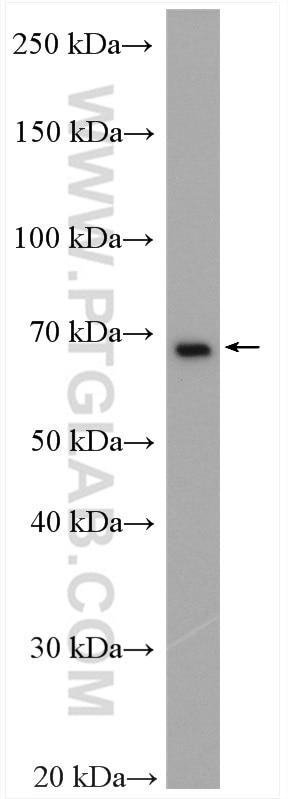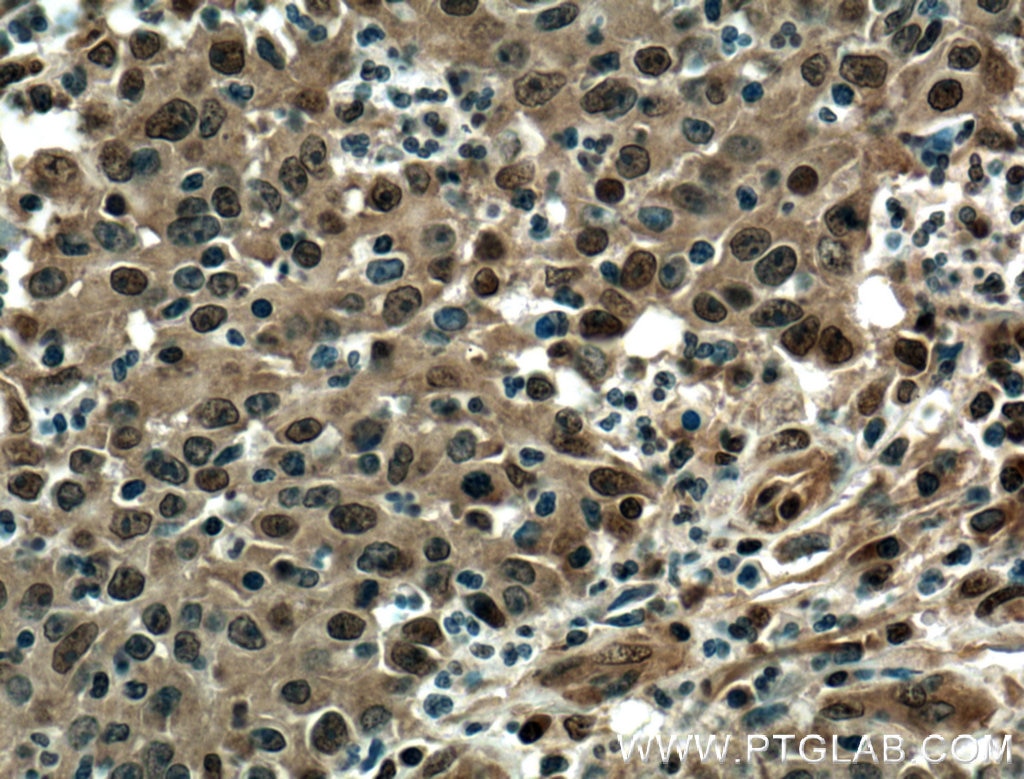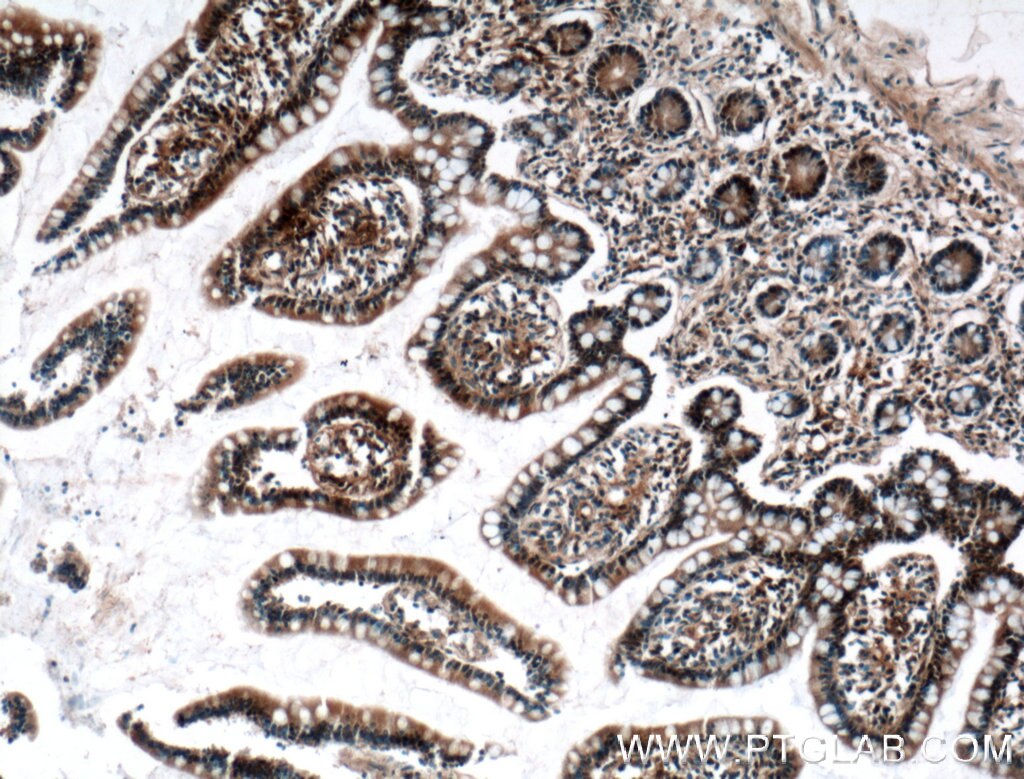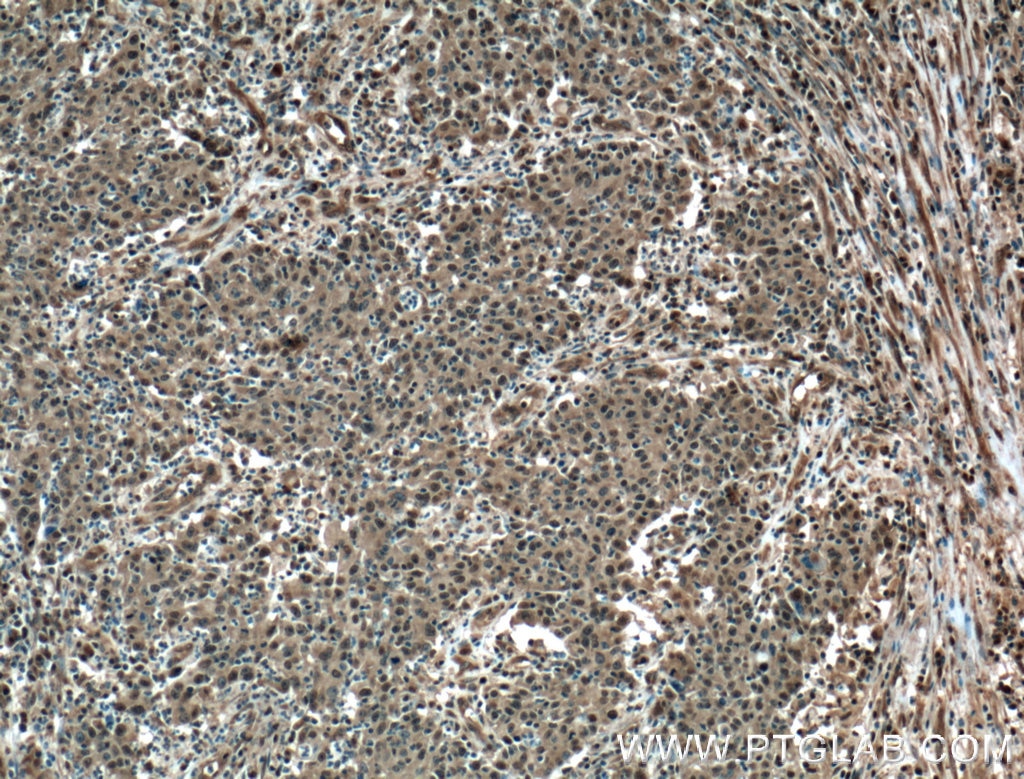Anticorps Polyclonal de lapin anti-EWS
EWS Polyclonal Antibody for WB, IHC, ELISA
Hôte / Isotype
Lapin / IgG
Réactivité testée
Humain, rat, souris
Applications
WB, IHC, IF, ELISA
Conjugaison
Non conjugué
N° de cat : 55191-1-AP
Synonymes
Galerie de données de validation
Applications testées
| Résultats positifs en WB | cellules K-562, cellules Jurkat, tissu testiculaire de souris |
| Résultats positifs en IHC | tissu de cancer du côlon humain, tissu d'intestin grêle humain il est suggéré de démasquer l'antigène avec un tampon de TE buffer pH 9.0; (*) À défaut, 'le démasquage de l'antigène peut être 'effectué avec un tampon citrate pH 6,0. |
Dilution recommandée
| Application | Dilution |
|---|---|
| Western Blot (WB) | WB : 1:1000-1:6000 |
| Immunohistochimie (IHC) | IHC : 1:50-1:500 |
| It is recommended that this reagent should be titrated in each testing system to obtain optimal results. | |
| Sample-dependent, check data in validation data gallery | |
Applications publiées
| WB | See 5 publications below |
| IF | See 1 publications below |
Informations sur le produit
55191-1-AP cible EWS dans les applications de WB, IHC, IF, ELISA et montre une réactivité avec des échantillons Humain, rat, souris
| Réactivité | Humain, rat, souris |
| Réactivité citée | rat, Humain, souris |
| Hôte / Isotype | Lapin / IgG |
| Clonalité | Polyclonal |
| Type | Anticorps |
| Immunogène | Peptide |
| Nom complet | Ewing sarcoma breakpoint region 1 |
| Masse moléculaire calculée | 68 kDa |
| Poids moléculaire observé | 68-70 kDa |
| Numéro d’acquisition GenBank | NM_005243 |
| Symbole du gène | EWS |
| Identification du gène (NCBI) | 2130 |
| Conjugaison | Non conjugué |
| Forme | Liquide |
| Méthode de purification | Purification par affinité contre l'antigène |
| Tampon de stockage | PBS with 0.02% sodium azide and 50% glycerol |
| Conditions de stockage | Stocker à -20°C. Stable pendant un an après l'expédition. L'aliquotage n'est pas nécessaire pour le stockage à -20oC Les 20ul contiennent 0,1% de BSA. |
Informations générales
EWS, also named as WSR1, belongs to the RRM TET family. It might normally function as a repressor. EWS-fusion-proteins (EFPS) may play a role in the tumorigenic process. They may disturb gene expression by mimicking, or interfering with the normal function of CTD-POLII within the transcription initiation complex. They may also contribute to an aberrant activation of the fusion protein target genes. This antibody is specific to EWS. And a 90 kDa band also could be detected (PMID:23552423).
Protocole
| Product Specific Protocols | |
|---|---|
| WB protocol for EWS antibody 55191-1-AP | Download protocol |
| IHC protocol for EWS antibody 55191-1-AP | Download protocol |
| Standard Protocols | |
|---|---|
| Click here to view our Standard Protocols |
Publications
| Species | Application | Title |
|---|---|---|
Nat Struct Mol Biol TDP-43 aggregation induced by oxidative stress causes global mitochondrial imbalance in ALS. | ||
Nucleic Acids Res The RNA binding protein EWS is broadly involved in the regulation of pri-miRNA processing in mammalian cells. | ||
Cell Rep LINC00921 reduces lung cancer radiosensitivity by destabilizing NUDT21 and driving aberrant MED23 alternative polyadenylation | ||
Mol Ther Nucleic Acids Translatome and Transcriptome Profiling of Hypoxic-Induced Rat Cardiomyocytes. | ||
J Reprod Dev Lipid droplets synthesized during luteinization are degraded after pregnancy | ||
Adv Sci (Weinh) m6A Reader hnRNPA2B1 Modulates Late Pachytene Progression in Male Meiosis Through Post-Transcriptional Control |
Avis
The reviews below have been submitted by verified Proteintech customers who received an incentive for providing their feedback.
FH Manohar (Verified Customer) (12-18-2021) | Overnight primary antibody using milk to block the blot.
|








